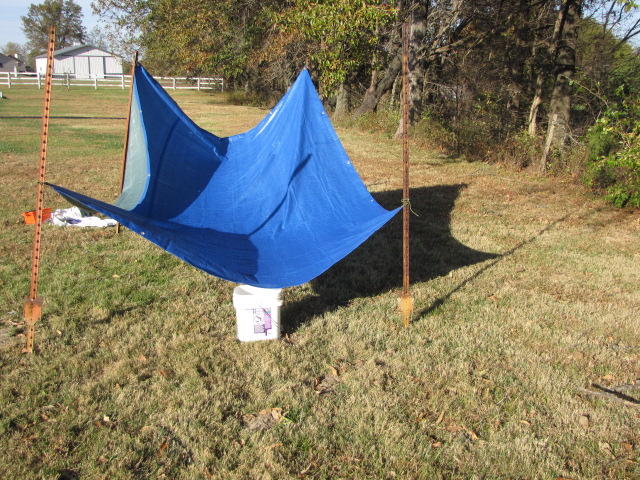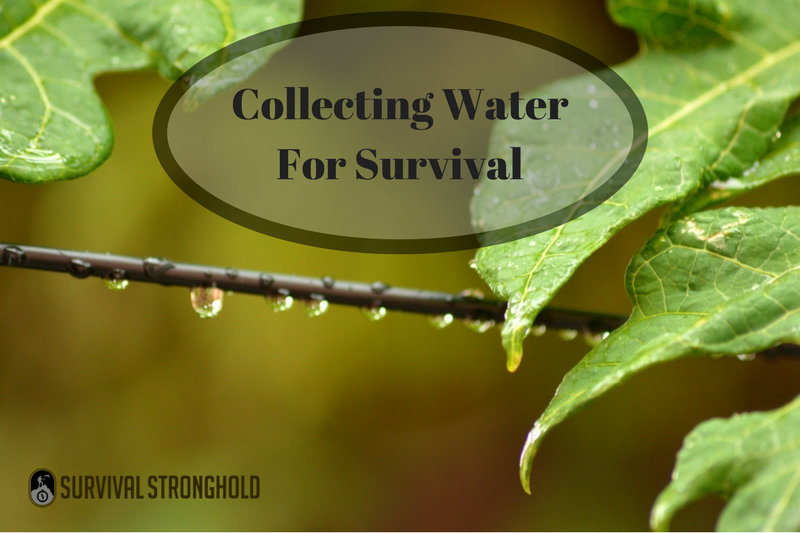When you are fighting for your survival, water is your number one priority. You may have heard the “rule of threes” of survival: you can only go three hours without shelter, three weeks without food, and three days without water.
Water is essential for survival, but unfortunately, finding water can pose a big challenge in many survival situations. Of course, you will probably first want to look for lakes, rivers, or streams as your primary water source. These will be reliable, and you need a constant source of water.
But what if you are somewhere you simply can’t find a body of water, or you have reason to believe the water might be contaminated and are not sure you can purify it?
There are definitely some other options available to you, and with a little common sense, knowledge, and know-how, you can collect water that might otherwise be difficult to consume. Here’s how:
Capturing Rain
This is an obvious one, and many people have relied on rainwater for survival for…well, ever. It is a common practice among homesteaders and people living off-the-grid to collect rainwater for drinking or watering plants and animals.
In the wilderness, while rain might not always be welcome, and can sometimes be severely life-threatening (3 hours without shelter, remember?), if you do have proper protection against the rain, you can collect it as a vital source of hydration.
While you certainly can stand in the rain and open your mouth, and probably will if you’re severely dehydrated, there is, of course, a better option. If you have any kind of tarp, plastic bag, parka, or any relatively large piece of fabric that rain would run off of, you can use this as an improvised water catchment device.
Suggested Product: Inexpensive, Personal Water Purification Device <<<Get It Here>>>
Simply tie two ends of your tarp (or whatever you’re using) to some trees. Then, take the other two ends, and tie them in the same fashion, only further down. Leave part of the center of the bottom half of your tarp slack, though, so it can create a funnel with which to collect water. This is where you will place your collection container. Depending on what you’re using and the size of your container, this might take some tinkering, but this is the basic idea:

Alternately, you can also create a sort of hammock to catch the rain, and then pour this into your container. If you do use this method, however, you’ll want to make sure you do not leave this water standing for very long, to avoid contamination.
Wherever you are collecting rainwater, try to hang your tarp somewhere will not a lot of debris will get caught in the water you’re collecting. So, if you are using trees, try to use trees that do not have a whole lot of taller branches up above them, if possible.
Capturing Dew
A less obvious source of water you may or may not have considered is dew. Every morning, there is at least a little bit of condensation that collects, mostly on leaves and grass, in most climates.
Related Article: “Fresh Drinking Water: What to do in a Time of Crisis”
Collecting dew won’t produce a lot of water, and shouldn’t be your primary source. But if you are short on water, every little drop counts. The best way to collect dew would be to absorb any dew that has collected on tall grass or thick leaves with a fine piece of fabric and then wring this out into your container. This might be relatively cumbersome but again, if you’re near dehydration, you need this moisture to survive.
Collecting Condensation
Similar to collecting dew, you might also be able to boost your odds of survival by collecting condensation. While collecting dew involves collecting the water that collects on plants in the early morning, however, collecting condensation is sort of the opposite.
Plants are living, breathing (sort of) beings that are made up largely of water, much like we are. Just as we sweat, they can “sweat” off the water. However, while we typically sweat to cool off our bodies when we are getting too warm, plants typically emit moisture when they have absorbed all the nutrients of the soil through the water they get during the day, namely, at night.
The best way to collect this condensation from plants is to tie a plastic bag over the leaf of a plant and secure with a rubber band. This will create a sort of mini-greenhouse effect, and you can collect at least a little moisture.
While these methods might not be your top choice for collecting water, they are crucial to know nonetheless. You never know when every little bit of moisture might count towards keeping you alive.



